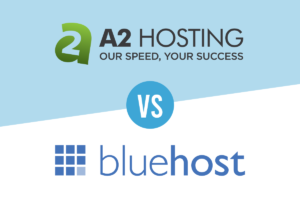You've just thought of the perfect domain name.
It's catchy, genius, and exactly what your business needs.
But it's taken. Your heart sinks. You get a little sad and you don't know what to do. You go check out the site and see that it's being unused, which makes it even worse. You should be putting the domain to good use!
Have to fear, there is a solution. Although it's not quick or cheap, a domain backorder service may be the answer to your problem.
What is a Domain Backorder?
A domain backorder is a service that helps someone attempt to acquire a domain name once it becomes available for registration. Through web domain registration sites like GoDaddy, using a domain backorder service could include domain monitoring membership, a membership with domain auctions through the website itself (ie, GoDaddy.com), a certain amount of credit towards first auction bids for a domain, and at least one year of domain name registration.
Backordering a domain is recommended for those who really want a particular domain name and are absolutely sure that it is the domain name for them. Backordering a domain allows someone to monitor the status of a domain name (more information on the different types of statuses for a domain name and how they change will be provided later in this guide). Backordering a domain also means that the person who placed the domain backorder will be notified when an auction for that domain name is about to start.
What Does it Mean to Backorder a Domain?
Backordering a domain means placing a bid on a domain name that you want for your website but is already owned by someone else. You place a bid for that domain name hoping that the current owner will not be renewing their registration and ownership of it and that it will soon be up for grabs and that you will have it.
Backordering a domain means that you really want that domain name. Even though it is owned by someone else, you know it is the perfect domain name for you and your website. Placing a backorder means that you will know when the domain name is going through the process of expiration and possible renewal, and when it will officially become available for registration under a new owner. Placing a backorder on a domain means being one of the first to know when the domain name you want becomes free for the taking. Backordering a domain also means you can start placing bids on it once it becomes available and is up for auction on many domain name registrars’ sites, thus raising the chances of successfully getting that domain name.
The Domain Name Lifecycle
Before we move on to the juicy parts of this post, it's important to understand how the domain name lifecycle works.

Domain Backorder Services
Many domain name registrar sites have domain backorder services that make it easier for users to keep track of the status of domain names and place bids once they expire and become available for auction. Many domain name registrar sites, like GoDaddy.com for example, offer benefits for their domain backorder services, such as one year of GoDaddy Auctions membership and $10 credit towards a user’s first auction bid. Many services also include a “no cure, no pay” policy, personalized alerts for certain domain names or relevant keywords, and other domain monitoring features. All these services hope to make placing domain backorders and securing backordered domains easier and less time-consuming. These services save customers a lot of time and also raise their chances of successfully securing an expired domain they backordered. Also, most domain backorder services work using the latest in dropcatching technology.
Read further for a list of online companies with the best domain backorder services.
Best Domain Backorder Companies
There are several of domain backorder companies with registration sites available online, but which ones are the cream of the crop? Which have the best services and reviews, and how do you know which one is the best for you?
One key concept to understand is the big three: SnapNames, NameJet and Go Daddy Auctions.
Below is a list of the current best companies and websites for domain backorders.
1. GoDaddy Domain Backorders
GoDaddy.com is arguably the most popular and well-known web domain registrar around. Backordering domains on GoDaddy is fast and easy.
Once users buy backorder credit, all they have to do to put the backorder to use is log in to their accounts, click on the “Domain Backorders” tab in the “My Products” section, and apply it to the domain name that the user wants.
Domain backorders on GoDaddy are $24.98 each (subject to change), including registration costs, and also comes with free daily domain monitoring and up to one year of free membership. GoDaddy also works with every different type of domain, from .com to .biz.
Since all backordered domains go through the process of an auction, GoDaddy comes with automatic bidding. The first person to place a backorder on a particular domain will be given the opening bid through their backorder purchase with no additional cost. Users will also be instantly notified when multiple people are interest in and bidding on the same domain name, and when the domain name expires and becomes available for auction.
GoDaddy also gives users multiple chances to secure a domain name or try again. Backordered domains will automatically be given to someone if they are the only person who placed a bid on it, but if they are outbid, they will be notified in case they want to place a higher bid or move their backorder credit to another domain. Backorder credits never expire on GoDaddy.com.
GoDaddy is also popular for its stellar privacy protection features. Users can hide their identity from previous domain owners and cybersecurity threats like hackers, albeit for an extra $9.99 a year. Users have the option to add Private Registration to their backorders, allowing them to keep their personal information from being listed in the public WHOIS database. Domain registration through GoDaddy makes backordering domains safer and more secure.
2. SnapNames
It looks old school, but SnapNames is of the three most popular and well-known web domain registrars.
It's actually a favorite of domainers and pros – and since it looks out of date, it's a hidden secret for finding gems!
SnapNames comes with lists of exclusive domain names found only on their website, daily deals on domain names, and lists of the most popular expired domain names on the market.
It also comes with search features, allowing users to see which domain names are taken or available, and even has categories for different domain names that makes finding the right domain for one’s business easier and more efficient. Categories include entertainment, technology, home and garden, food and drink, finance, and health. SnapNames is especially recommended for people looking for the perfect domain name for their business and brand.
SnapNames has numerous search functions and alerts, making monitoring domains easy. Users will also be alerted if a domain name they are interested in is expected to expire and become available within 30 days.
Again, customers only have to pay if the domain name they backordered was successfully secured for them. Customers will also have access to premium domain name auctions for backordered domains.
Through the domain backordering service on SnapNames, customers will have access to global domain name marketplaces, with all the ease and convenience of online shopping.
Thanks to their many business partners and high-quality dropcatching technology, SnapNames offers a wonderful selection of around 30 million domain names at low prices, making it ideal for businesses, especially start-ups with tight budgets trying to build their web domain.
Note, SnapNames acquired BackOrderZone
3. NameJet
Another 1999 looks site, what's up with that?!
NameJet is also one of the three most popular and well-known web domain registrars.
NameJet allows users to add their preferred domain names to a personal domain name backorder list, and NameJet will do all the work for them, such as daily monitoring and personalized alerts when a domain name will become available soon.
NameJet also has a slew of exclusive pre-released domain names, already located at their domain registrar partners’ sites, meaning they won’t be available for auction anywhere else. There are also no hidden fees, and up to one year of free registration for the highest bidder of a domain name. NameJet is one of the most successful domain backorder companies when it comes to winning pending-expired domain names for their customers.
4. DropCatch
Since it was founded in 2008, DropCatch has used its dropcatching technology to secure over a million backordered domain names for its users.
Placing backorders through DropCatch is free. Customers are only charged if the backordered domain has been successfully secured for them.
DropCatch also comes with daily lists of currently expiring domain names and downloadable reports and search features to make it easier for customers to search for valuable domains and to check on their status.
There are two potential outcomes for when a user backorders a domain on DropCatch. If that user is the only one to backorder a domain, they pay $59 and the domain name is theirs, but if multiple people place backorders on the same domain, then the domain goes to a public auction. The auction will last 3 days and the highest bidder will win.
6. CatchTiger
Next is CatchTiger. Auctions are open to the public and there’s a new one every day. Accounts are free and come with one year of free domain name registration. The starting bid for all domain auction is 35 pounds ($43.70), and there is a no cure, no pay policy. No cure, no pay means that users will not have to pay if CatchTiger cannot successfully dropcatch the expired domain name.
Aside from participating in expired domain auctions, CatchTiger also allows users to sell their domain names through its Market Place platform to a relevant audience of potential domain name buyers. Though it is a UK-based domain backorder service provider and company, it works with many different international domains, including countries in the EU and even New Zealand.
Lastly, CatchTiger offers personal alerts that will let users know when their favorite domain name is available and up for auction. All users will have to do is let CatchTiger know which domain name and relevant keywords they should watch out for. Users will first receive an email when their preferred domain name becomes available, saving them time and raising their chances of successfully securing their perfect dream name. Users can have an unlimited number of personal alerts added to their account on CatchTiger.com.
DomainMonster’s Backorder service monitors users’ most wanted domain names and registers them on their behalf the instant they become available. DomainMonster also keeps track of the hundreds of thousands of domain names that expire each day, allowing users to search for and monitor them on their expired domains pages.
Besides minor registration fees, placing backorders through DomainMonster is free. They also use a no cure, no pay policy. They also only take one backorder per domain and don’t auction backorder domains, instead working exclusively for the user to secure it for them. All users have to do is search for their chosen domain in the website’s search box and, if it’s unavailable, click on the “Back Order” link to start monitoring it. The second that the domain name a user backordered expires and becomes available, DomainMonnster catches it and works diligently to secure and register it under the user’s name.
Best Way to Backorder a Domain
Before we go over the best ways to backorder a domain, it’s important to note that placing a domain backorder does not guarantee that one will acquire the domain name once it becomes available.
Many variables affect the process of backordering a domain. For example, the current owner of the registered domain name might renew the registration, thus preventing it from being available for new ownership for the time being, or websites with domain backorder services like GoDaddy might be unsuccessful in their attempts to give someone registration for the domain name that they want.
Other variables include having to participate in either a public or a private auction for the domain name, where someone else has as much of a chance at successfully getting the ownership for the domain name as you do.
Now, what are the best ways to backorder a domain? How do domains expire in the first place? How do you backorder a domain? And how do you raise your chances of successfully getting the domain name through the backorder?
Contrary to popular belief, domains do expire, and oftentimes before they say they will. The domain name becomes “expired” if its current owner does not renew it by its expiration date. The domain name then undergoes a forty-day grace period of sorts where all the domain’s services are shut off but the current owner of the domain still has a chance to renew the domain for a standard renewal fee through the web domain service provider.
Once the domain enters this forty-day grace period though, it is highly likely that the current owner will renew it at all. Otherwise, if the current owner was planning on renewing and keeping the domain name, they would have made sure to renew their registration before its expiration date. However, it is also likely that the owner was just being lazy or procrastinating, so they can still renew their registration of the domain name without penalty and to the misfortune of people who want that domain name to be free for the taking.
Then, once forty days have gone by and the grace period has ended, the domain name goes through a “redemption period” where it becomes harder for the current owner to renew their registration (such as more expensive renewal fees and other penalties), and the chances of the domain name becoming free for new ownership and registration are even higher and likelier. After this “redemption period”, the domain name becomes “locked” before going through a deletion phase, which takes approximately five days. The whole process takes around 75 days after the domain name’s initial expiration date and once the process ends, the domain name is officially up for registration for those who want it, thus becoming eligible for backorders.
But the process of backordering a domain once the domain name becomes available for registration is not as simple as it once was. It used to be first come, first serve in that the quickest person to register for a recently expired and highly desired domain name would be the one who got it.
Now, web domain name registrars like GoDaddy.com conduct auctions for expired domain names. That way, these domain name registrars earn extra profits, and the domain name goes to the highest bidder rather than the quickest and luckiest domain name hunter.
This old process of registering expired domain names only happens if an expired domain name was up for auction but was dropped due to a lack of bidders. This does not usually happen though, and if it does, it goes through an automated “dropcatching service”, many of which are offered in the domain backorder companies and services listed earlier in this guide.
In order to place a backorder, and start bidding for a domain name once it becomes available, you need to place a backorder at the appropriate domain registration auction house. This needs to be done before the domain name reaches its registrations’ expiration date, or before the end of its “expired period” which, depending on its domain registrar, can potentially last up to 45 days. You will need to sign up for an account on the domain registration auction house site where the domain name you want will become available.
But there are hundreds of domain name registrars and auction sites currently available online. How can you know which one will have the domain name you are looking for?
First, determine the domain name registrar. Most domain name registrars have an auction partner that they exclusively use, so knowing the registrar your domain name is under means you will know which auction site to go to when it’s time to place bids for your domain name. Simply do a WHOIS search with your desired domain name and look through the information to find the name’s registrar.
Then, use the chart listed under Step 2, “Determine The Auction Partner” to find the auction house partner used by your domain name’s current recorded registrar. There are three major auction houses that most domain name registrars exclusively use: GoDaddy Auctions, NameJet, and SnapNames. One of the best chances of acquiring the expired domain name you want is to regularly keep track of the status and progress of the expired domain name at the auction house site used by the registrar.
Now Go Get Your Domain!
It’s bad enough when a domain name you want for your website is already taken by someone else, but the process of waiting for that name to expire and become available can be just as bad.
It can be difficult and frustrating and time consuming, and you aren’t even guaranteed the domain name. But being the new owner of an expired domain name that you’ve always wanted isn’t impossible.
Backordering a domain is one of the best and easiest ways to raise your chances of successfully being the new owner of your dream domain name once it expires. It takes away a lot of the confusion and complication away from the whole process.
Domain backorders make it easier to keep track of the status of a domain name you want, so you’ll know sooner when it expires and becomes available, or if it is renewed by its current owner, or when it goes up for auction on its current registrar’s auction partner site. It’s no wonder domain backorders are such a popular service and common practice for people looking for the right web domain for their website.
Got all the info? Now go get your domain!
Last Updated on March 24, 2023 by Joe




